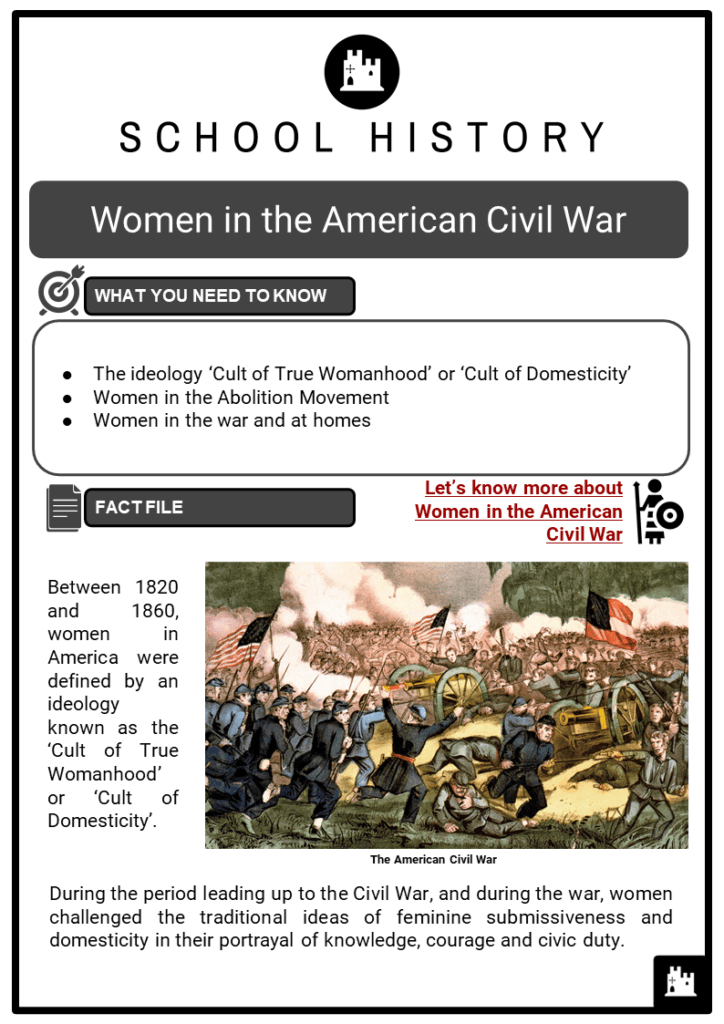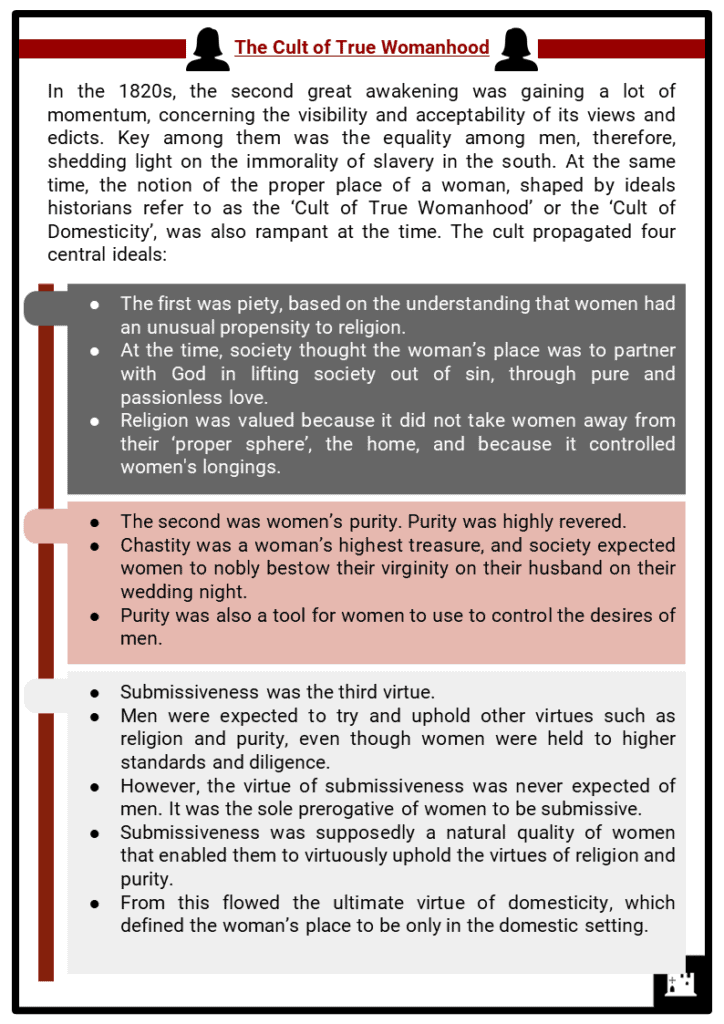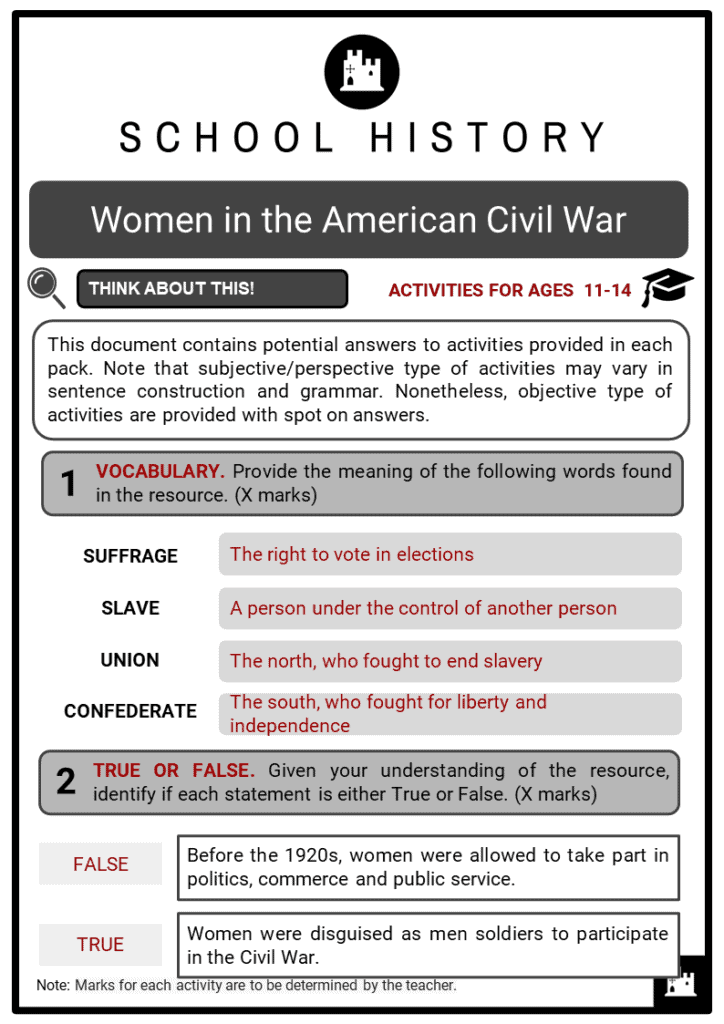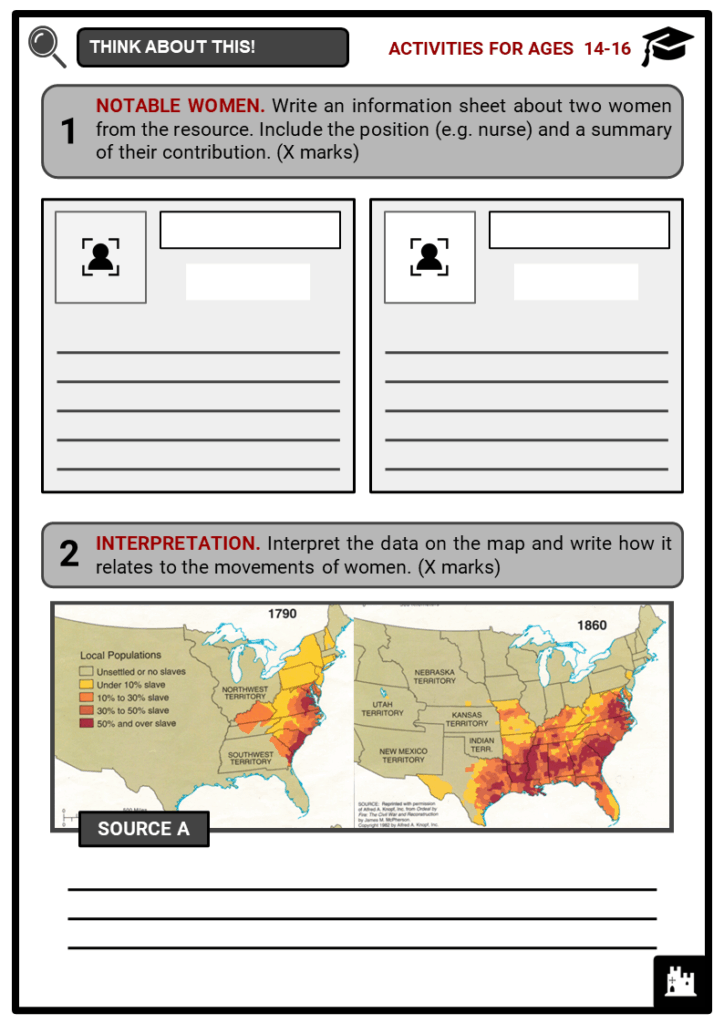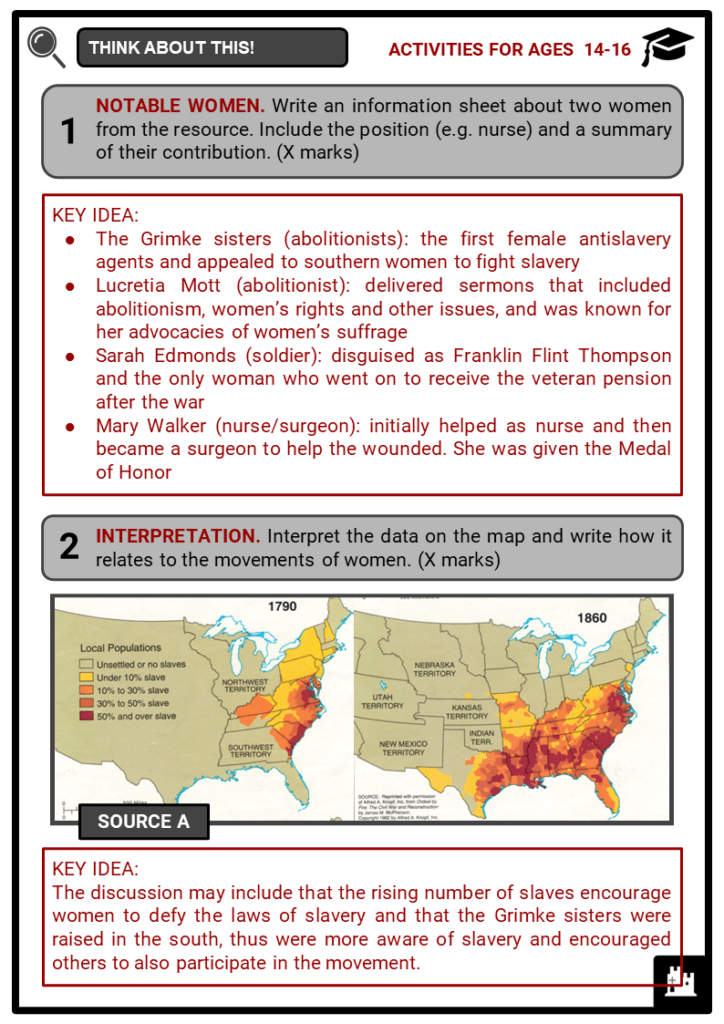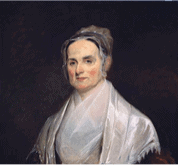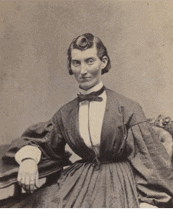Download Women in the American Civil War
Worksheets
Do you want to save dozens of hours in time? Get your evenings and weekends back? Be able to teach Women in the American Civil War to your students?
Our worksheet bundle includes a fact file and printable worksheets and student activities. Perfect for both the classroom and homeschooling!
Table of Contents
Add a header to begin generating the table of contents
Summary
- The ideology ‘Cult of True Womanhood’ or ‘Cult of Domesticity’
- Women in the Abolition Movement
- Women in the war and at homes
Key Facts And Information
Let’s know more about Women in the American Civil War
- Between 1820 and 1860, women in America were defined by an ideology known as the ‘Cult of True Womanhood’ or ‘Cult of Domesticity’.
- During the period leading up to the Civil War, and during the war, women challenged the traditional ideas of feminine submissiveness and domesticity in their portrayal of knowledge, courage and civic duty.
The Cult of True Womanhood
- In the 1820s, the second great awakening was gaining a lot of momentum, concerning the visibility and acceptability of its views and edicts. Key among them was the equality among men, therefore, shedding light on the immorality of slavery in the south. At the same time, the notion of the proper place of a woman, shaped by ideals historians refer to as the ‘Cult of True Womanhood’ or the ‘Cult of Domesticity’, was also rampant at the time. The cult propagated four central ideals:
- The first was piety, based on the understanding that women had an unusual propensity to religion.
- At the time, society thought the woman’s place was to partner with God in lifting society out of sin, through pure and passionless love.
- Religion was valued because it did not take women away from their ‘proper sphere’, the home, and because it controlled women's longings.
- The second was women’s purity. Purity was highly revered.
- Chastity was a woman’s highest treasure, and society expected women to nobly bestow their virginity on their husband on their wedding night.
- Purity was also a tool for women to use to control the desires of men.
- Submissiveness was the third virtue.
- Men were expected to try and uphold other virtues such as religion and purity, even though women were held to higher standards and diligence.
- However, the virtue of submissiveness was never expected of men. It was the sole prerogative of women to be submissive.
- Submissiveness was supposedly a natural quality of women that enabled them to virtuously uphold the virtues of religion and purity.
- From this flowed the ultimate virtue of domesticity, which defined the woman’s place to be only in the domestic setting.
- The last one was domesticity.
- It was known that the proper place for a woman was home and, as a wife, a woman should create a refuge for her husband and children.
- Cooking, needlework, making beds and tending flowers were considered to be the activities for women.
- There was ‘scientific’ evidence that made the basis for the distinct roles and expectations between men and women. The advancement of science has since overturned all the assertions made at the time.
- The first evidence was that women were physically smaller than men.
- Women also fainted more often than men did, which was a result of the clothing of the time (tight corsets) and lack of exercise.
- Women also had a monthly ailment that visited them.
- Menstruation caused periodic illness and even short-term insanity.
- Women were thought to have a weaker nervous system that was more prone to irritability, overstimulation and fatigue compared to the male nervous system which was predictable and consistent.
- Later, scientists tried to connect the size of the brain to body weight, but it was found that even physically lighter women had a higher ratio of brain size to body weight. To correct this misnomer, height was connected to brain size, and in this way, male counterparts emerged to have a larger brain than women.
- The cult of true womanhood ‘privatised’ the opinion of women for work, education, voicing opinions or supporting reforms and advocacies. Women were thought to be incapable of effective participation in the realms of politics, commerce or public service.
- The characteristics of ‘True Womanhood’ were mentioned in a lot of sermons, books, religious texts and magazines. Women were also expected to dress nicely in order to please their husbands.
Women in the Abolition Movement
- Long before the 1820s retrogressive philosophy, women were exercising their intelligence and passions in other avenues beyond the homestead. In 1791, for instance, it was women who led the boycott against sugar, to compel the enactment of the abolition of the slavery act. The boycott was effective, as it impacted plantation farmers, the majority of whom were slave owners.
- "the Anti-Slavery cause cannot stop to estimate where the greatest indebtedness lies, but whenever the account is made up there can be no doubt that the efforts and sacrifices of the WOMEN, who helped it, will hold a most honorable and conspicuous position."
- The sisters wrote pamphlets containing Angelina’s ‘Appeal to the Christian Women of the South’ that appealed to southern women to defy the slavery laws. Angelina and Sarah played leadership roles at the first Anti-Slavery Convention of American Women in 1837.
- The Grimke sisters (Angelina and Sarah) were the first female antislavery agents. Their perspective as southerners and as women contributed greatly to the Abolitionist Movement.
- Lucretia Mott was known for her advocacy regarding the suffrage of women and played an important role in the Abolitionist Movement. She delivered sermons that included abolitionism, women’s rights and other issues.
- Women gained experiences in public speaking and organising throughout the Abolition Movement which stood them in good stead going forward. Abolitionism brought together active women and paved the way for women to have political and personal connections.
- William Lloyd Garrison ensured the participation of women in the movement he helped found, the American Anti-Slavery Society.
The Civil War
- Both southern and northern women engaged in the Civil War.
- In the north, however, their efforts were more concerted.
- The women formed volunteer brigades, which collected supplies and money from households and passed the same to the troops in the army.
- There were also those who volunteered as army nurses with Dorothy Dix serving as the superintendent of the nurses.
- Women also set up the US Sanitary Commission.
- The commission helped the army avert avoidable diseases by maintaining sanity in army facilities.
- Slave women did not have the opportunity to engage in the Civil War, because of slavery. Black women faced twice as much discrimination as white women. Firstly because of their gender and secondly because of their skin colour.
- Women were also on the front lines fighting during the Civil War. In 1863, in Gettysburg, Pennsylvania, the Union burial detail discovered women among the dead, wearing a Confederate private uniform.
- Because of gender discrimination, women fought in disguise as men, making an actual count of the number of women in the Civil War army impossible. Despite this, it is estimated that approximately 400 to 750 women engaged on the front lines.
- Some women, engaged out of a desire for adventure, such as Sarah Emma Edmonds disguised as Franklin Flint Thompson of the Michigan Infantry, is quoted saying, “I could only thank God that I was free and could go forward and work, and I was not obliged to stay at home and weep.” Sarah is also the only woman who went on to receive the veteran pension after the war.
- Frances Clayton, Jennie Hodgers (Albert Cashier), among other women, engaged in the war in disguise. Loreta Janeta Velazquez served as a spy for the Confederate army.
- Most of the people in the war were citizens who had never engaged in armed conflict, making the disguise of the women soldiers challenging to discover. However, there were those who were found earlier on in the war and were sent to prison.
- Mary Edwards Walker served in the Union Army and was given the Medal of Honor for her efforts in treating the wounded during the Civil War. She was rejected from serving as a surgeon but was offered the role of a nurse instead due to her gender. In 1862, she became the first female surgeon employed by the US army.
- About 20,000 women worked for the Union war effort in which working-class white women and African-American women worked as laundresses, cooks and matrons. Around 3,000 middle-class white women served as military nurses. Army nurses travelled from hospital to hospital to provide humane and efficient care for wounded, sick and dying soldiers.
- Women in the south also served the Confederate through local auxiliaries and relief societies. From their homes, women provided uniforms, blankets, sandbags and other supplies for the army. They also provided food and worked as untrained nurses in makeshift hospitals.
Image sources:
- https://cdn.britannica.com/13/149613-050-C0B0B8D5/Battle-of-Gettysburg-Currier-lithograph-Ives-July-3-1863.jpg
- https://upload.wikimedia.org/wikipedia/commons/thumb/5/57/Mott_Lucretia_Painting_Kyle_1841.jpg/300px-Mott_Lucretia_Painting_Kyle_1841.jpg
- https://upload.wikimedia.org/wikipedia/commons/6/65/Miss_F._L._Clayton.jpg

